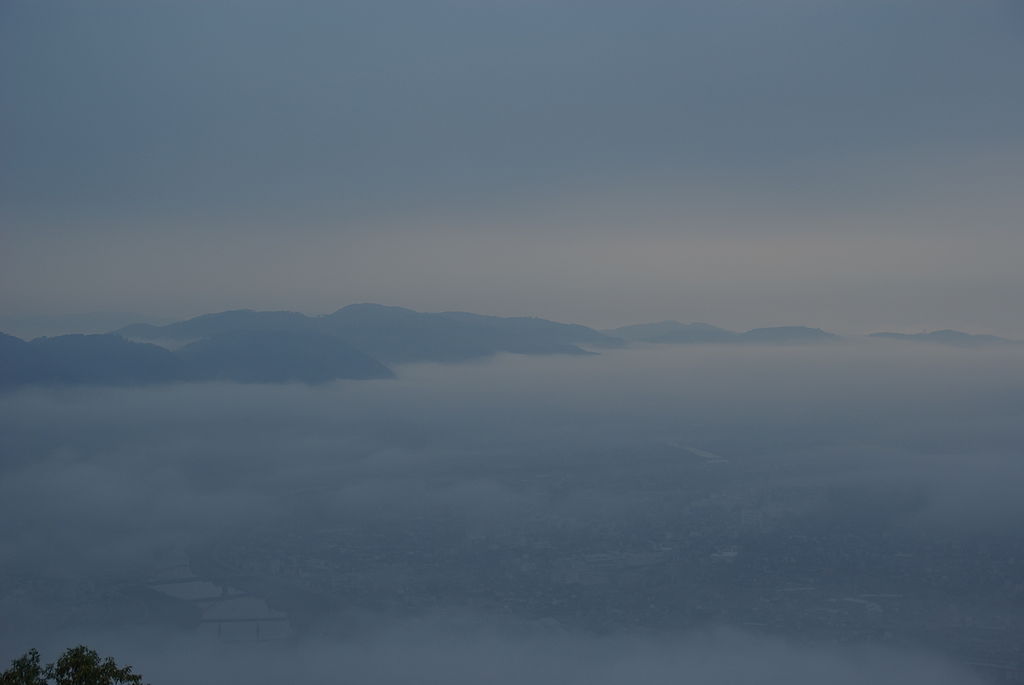Sep 27, 2023
Visit Miyoshi City in Hiroshima Prefecture
I’ve already tried to lure you out to Mibu’s rice fields. At the risk of being too insistent on the charms of the countryside, let me also suggest that it’s time for a visit to Miyoshi. Miyoshi is a beautiful little city, the largest town in Hiroshima prefecture that isn’t on the Seto Inland Sea, and unlike some other day trips, there’s more than enough in and around the city to make a full day.
First, there’s the countryside itself. Miyoshi is built in a mountain valley where three rivers come together. The length of human occupation is attested to by the dense cluster of 5th and 6th-century ‘kofun,’ stone grave mounds found across Japan on the grounds of Miyoshi Fudoki-no-oka Park. The park is an excellent place to stretch your legs, in fact, and take in the hills surrounding Miyoshi. Near the entrance, the History and Folklore Museum offers an exciting look into the region’s past and archaeology.
One phenomenon Miyoshi is locally famous for is the “Sea of Fog,” which regularly fills the river basin on mornings from October to March. You won’t find it in June, but leave yourself a note because it is a remarkable sight. In the meantime, the view from Mt. Takatani’s observation deck is always good, but especially at night when the city (like all cities) is at its most magical.
Miyoshi is also famous for its winery. The wine is made from Pione grapes, a particularly sweet and juicy Japanese variety, and in truth, it’s pretty grim, though I’m told it’s improving over time. But for a fascinating and close-up look at the winemaking process, as well as the chance to bring home a few bottles of rosé (okay, some people profess to enjoy the wine, and the winery makes whites, reds and rosé), it’s a great trip. If you’re inclined, the winery offers tasting of its Tomoé line of wines. There is a large playground that is a hit with restless kids and a good yakiniku and barbecue restaurant on hand, in addition to a market featuring locally grown produce.
The city also has something to offer art lovers, in the Okuda Genso Sayume Art Museum. Okuda Genso was a local ‘nihonga’ painter, one of the most famous of the 20th century. His landscapes are characterized by a vivid shade of red that now bears his name, ‘Genso red.’ Genso’s wife Sayume was a well-known craftswoman in her own right, making ceramic dolls, and the works of both husband and wife are on display. The paintings are striking, and the museum building is a wonderful space. On nights with a full moon, the museum stays open late to allow visitors to watch the moon rise over a still pool of water. There are also special exhibits throughout the year. In June, this will include paintings by Kibo Kodama, another outstanding nihonga painter. Don’t miss it.
Finally, if you’re planning to visit after the middle of June, you stand an excellent chance of spotting the town’s famous cormorant fishermen plying their vanishing trade on the local rivers. For centuries, these fishermen have trained cormorants, a largish aquatic bird, to fish for them on rivers around Japan. How well the birds are trained is up for question; in fact, the “leashes” around their necks prevent them from swallowing the prized ‘ayu’ sweetfish before the fishermen can retrieve them. Rest assured, though, that the birds dine like kings when the work is done.
Destinations
Miyoshi Fudoki-no-oka Park
Address: 122, Kodako-machi, Miyoshi-shi, Hiroshima-ken (map)
Telephone: 0561328024
Hours and Admission Fees: The park is open from 9:00 to 17:00 year-round and is free to enter. The History and Folklore Museum has the same hours, except Mondays and national holidays. Admission to the museum is 200 yen for adults, 150 yen for college students, and free to anyone high school and younger.
http://www.city.aichi-miyoshi.lg.jp/
Mt. Takatani Observation Deck
Address: Awayamachi, Miyoshi, Hiroshima Prefecture. There are spaces for thirty cars, and it is probably safest to drive up (rather than make the 700-meter hike) if you’re planning a night visit.
Website: http://www.asahi-net.or.jp/~rs9s-mrok/ (Japanese)
Miyoshi Winery
Address: 445-3 Higashisakeyamachi, Miyoshi 728-0023, Hiroshima Prefecture
Okuda Genso Sayume Art Museum
Address: 453-6 Higashi-sakeya-machi, Miyoshi-shi, Hiroshima-ken
Telephone: 0824-65-0010
Hours: 9:30 to 17:00, except for the second Wednesday of the month and New Year’s holidays from December 30 to January 1. Open until 21:00 on the full moon nights for special moon viewing. In June 2018, that will be Thursday, June 28. Check the website for future dates.
Admission: 800 yen for adults, 400 yen for college students, and free for anyone in high school or younger. Discount for museum members and a “pair ticket” available for 1500 yen.
Website: http://www.genso-sayume.jp/index2.html (Japanese)
By Ozizo (Ozizo’s file) [Public domain], via Wikimedia Commons


About the author